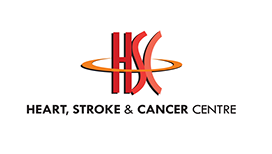Dr. Michael Lim's Articles

Getting off to a good start
Begin the year by checking if you are at risk as early detection can prevent heart attacks, stroke, memory loss.
Start the new year on the right note by giving yourself a clean bill of health. While heart attacks and stroke remain as important causes of mortality, advances in medical sciences have made heart attacks and stroke largely preventable. With an increasingly aging population, preventing memory loss also becomes more relevant as longevity increases.
Preventing a catastrophic heart event
While most expect patients with heart disease to have chest pain or shortness of breath, the reality is that many patients with serious heart disease do not have any symptoms, and this is especially so if they live sedentary lifestyles.
Mr A, Mr B, Mr C and Mr D (whose ages ranged from forties to seventies) were seen recently and what they all had in common was the presence of life threatening heart artery disease without any chest pain or shortness of breath. They all had near total or total occlusion of their main heart artery (also called the left anterior descending or LAD artery which supplies the main pumping chamber of the heart). Mr A had single artery disease, Mr B had 2 out of the 3 major arteries blocked, Mr C had blockage of all 3 major heart arteries (total occlusion of left and right heart arteries) and Mr D had 80% occlusion of the left main artery (LM) in addition to severe narrowing of the 3 major heart arteries. The LM is the artery which branches into the LAD and the left heart artery, and critical narrowing of the LM is associated with a high risk of sudden death.
For many, the first manifestation of underlying heart artery disease is often a catastrophic heart attack or even sudden cardiac death. In a study published in the Journal of the American Medical Association in 2012 by investigators from Iceland led by Erik B. Schelbert, about 2 in 3 heart attacks were silent and silent heart attacks were more prevalent in diabetic patients. Hence, if there is a strong family history of heart disease or there are pre-existing risk factors for heart disease, it may be wise for middle aged or elderly patients to see their physicians for an assessment for heart artery disease despite the absence of symptoms.
All 4 patients had their underlying heart artery disease confirmed with a low radiation dose computed tomography (CT) scan of their heart arteries.
For those aged 50 years and above, a CT scan of the heart arteries using the newer scanners with radiation reduction scanning protocols, the cancer risk from the X-ray radiation exposure is negligible. This safe, outpatient, non-invasive CT scan of the heart arteries, which can be completed in seconds, should always be considered before subjecting oneself to the procedure of invasive coronary angiography (ICA) which involves inserting a tube into the artery and manipulating it into the heart artery.
Compared to CT, ICA is more expensive, carries real risk, is associated with higher X-ray radiation exposure and requires hospitalisation.
While Mr A, Mr B and Mr C had their arteries opened with the placement of stents (minute cylindrical meshes) inserted through a 2 millimetre opening in the leg artery under local anaesthesia, Mr D had to undergo an open heart artery bypass surgery. Timely diagnosis prevented a sudden heart attack and sudden death in these 4 patients.
Preventing stroke
High blood pressure is the single most important preventable cause for stroke. Generally for stroke prevention, a target blood pressure level of less than 140/90 mm Hg is considered reasonable based on current guidelines. The Secondary Prevention of Small Subcortical Strokes (SPS3) study showed that a systolic blood pressure target of less than 130 mm Hg is safe and may be incrementally beneficial in people with recent minor strokes as compared to a target blood pressure of 140.
Other than high blood pressure, treatable risk factors for stroke include high cholesterol, diabetes mellitus and smoking.
Most strokes are due to obstruction of a vessel in the brain or disruption of flow to the brain. In up to 62% of patient with these strokes, narrowing of the arteries in the brain were present, and up to 20% of these strokes were attributable to these narrowed arteries.
Generally, Asians have a higher prevalence of narrowing of the brain arteries as compared to patients in the Western populations.
Large scale autopsy studies done on foetuses to those in their tenth decade have demonstrated the presence of cholesterol deposits from the first decade onwards and progressing with age. Advanced disease of the brain arteries is generally seen from the fifth decade onwards and the most rapid progression occur in the sixth to seventh decades.
Unlike heart arteries which can be opened with stents, arteries in the brain are generally untreatable with stenting except for severe narrowing in the carotid artery (neck artery leading to the brain) and vertebral artery (artery from the arm artery which supplies blood flow to the back of the brain).
As narrowing of the brain arteries can only be treated with medication, the more effective way is to commence preventive measuresearly in life and risk factor control should start from adolescence. The simplest way to ascertain the presence of disease of the arteries to the brain is to do an ultrasound of the carotid artery. The presence of disease should alert one to the need for strict risk factor control.
For those who have suspected stroke, a magnetic resonance scan of the brain to include visualisation of the arteries in the brain is both safe and accurate.
For those in the sixties onwards, a common cause of stroke is the presence of an abnormal heart rhythm called atrial fibrillation (AF) and the prevalence can be as high as 1 in 10. Hence, for those in their sixties onwards, the presence of palpitations should be investigated to detect the presence of AF. Early detection of AF can prevent catastrophic stroke.
Preserving memories
Better living conditions have increased longevity and with longevity, dementia becomes more prevalent. Small vessel disease of the brain due to high blood pressure, strokes and diffuse white matter disease (WMD) of the brain are associated with a higher likelihood of cognitive impairment. Autopsies on those with dementia show the presence of Alzheimer disease and small vessel disease in the majority. Therefore, preventing small vessel disease of the brain can potentially reduce the likelihood of cognitive impairment.
High blood pressure is treatable. Small vessel stroke is often due to cholesterol that are released from deposits in the walls of arteries when the lining of these deposits (plaques) is disrupted and the material in the plaques travel into the arteries of the brain. Typically, these arise from the aorta, the neck arteries or the brain arteries.
Generally, one should avoid any invasive diagnostic procedure that will require an insertion of a tube or device into either of the neck arteries unless there is no safer alternative, and this will include angiogram of the carotid arteries or angiogram of the heart arteries through the wrist artery (as this will traverse the right arm artery which has a common origin with the right carotid artery).
If you are going for valve surgery or open heart bypass graft surgery or surgery to the aorta, it is imperative that a computed tomography scan of the aorta be done to ascertain the presence of plaques and calcium in the aorta so that precautions can be taken during the surgery to avoid areas where there are plaques.
Studies have shown that the obstruction of the airway resulting in decreased oxygen to the brain (obstructive sleep apnoea or OSA) is associated with increased WMD of the brain, reduction in brain volume and cognitive impairment. For those who snore frequently and especially if they breathe through the mouth, the likelihood of OSA is high and a sleep study with an assessment of the nose and airway may be helpful.
Assessing your risk
If you have risk factors, do discuss with your physician about getting your heart checked. For risk assessment of stroke, a carotid ultrasound is a useful starter. Preventive measures will include avoiding any diagnostic procedure that will increase your risk of silent strokes. Discuss with your physician for safer alternatives and remember that non-invasive tests are not only safer than invasive tests, they are also generally less expensive.
Appropriate planning and pre-operative assessment is very important for surgeries that are associated with increased risk of stroke especially heart valve procedures, surgeries to the aorta and neck artery surgeries.
If you snore, feel tired and tend to be forgetful, it could be that your brain is not getting enough oxygen during sleep. Making sure that there is enough oxygen to the brain may not only reduce the risk of cognitive impairment but may also reverse some of the cognitive impairment. So start the new year by doing the right things that will keep you in good health.
10.01.2015
Lowdown on high blood pressure
24.01.2015
Think twice about that canned drink
07.02.2015
07.03.2015
Don't blame memory loss on ageing
21.03.2015
04.04.2015
Heart surgery for those below 50
18.04.2015
02.05.2015
16.05.2015
Proactive Stance Against Strokes
30.05.2015
Treadmill Results Not Conclusive
13.06.2015
Tuck in all you want – for a hefty price
27.06.2015
11.07.2015
25.07.2015
08.08.2015
Blood thinners: when is it safe to stop?
22.08.2015
05.09.2015
19.09.2015
When chest pain becomes a worry
03.10.2015
Making good decisions for a bad heart
17.10.2015
31.10.2015
14.11.2015
28.11.2015
When the heart valve degenerates
12.12.2015
Click to read more
Click to read more
Click to read more



